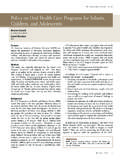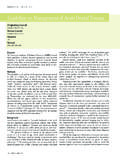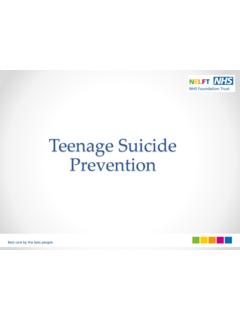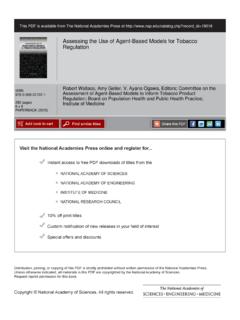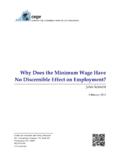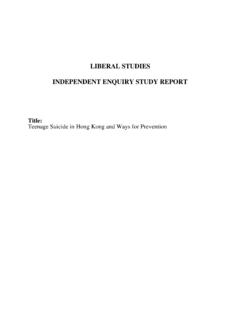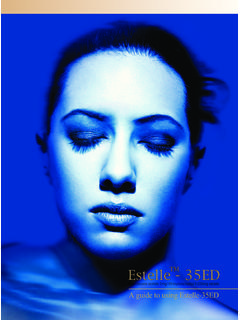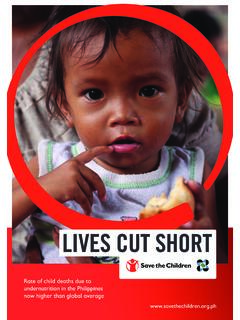Transcription of Literature Review Tooth Whitening in Children and ...
1 Literature Review Tooth Whitening in Children and Adolescents: A Literature Review Sean S. Lee, DDS1 Wu Zhang, MD2 D. Harvey Lee, DDS, MPH3 Yiming Li, DDS, MSD, PhD4. Abstract The purpose of this paper was to summarize the findings of a Literature Review on the use of peroxide-based Tooth - Whitening agents in Children and adolescents. Safety con- siderations, including localized adverse effects and toxicological concerns, are described. Oral findings include: (1) 1 in every 2 to 3 patients may experience Tooth sensitivity and/or gingival irritation after bleaching treatment, which may be more traumatic an experience for Children than adults; (2) depending on dose, duration, frequency, and route, studies indicate excessive exposure to peroxide can be potentially harmful; (3). degree of potential toxicity and harmful outcomes increases in those who overuse whit- eners a concern in teenagers; (4) careful case selection using stringent criteria is suggested for primary teeth Whitening ; (5) Whitening in healthy adolescents is a case-by-case de- termination that must include the weighing of risks (oral health and age) vs benefits (improved esthetic perception).
2 It is hoped that the present Review will lead to a better understanding of the health implications of Tooth Whitening in Children and adolescents, and offer guidance for treatment that provides satisfactory outcomes externally (enamel and gingiva) and internally (endodontic tissues and systemic health). (Pediatr Dent 2005;. 27:362-368). KEYWORDS: PEROXIDE, Children , Whitening , PRIMARY TEETH, SAFETY, SIDE EFFECTS, CARCINOGENESIS. Received March 23, 2005 Revision Accepted August 17, 2005. H. ydrogen peroxide (H2O2) is found in the environ- ies on Children , the adverse effects investigated have been ment and the human body1 and is used for in- limited to the localized effects of Tooth whitener dustrial applications. For example, it is used in the Meanwhile, a greater number of pediatric patients are processing of foods and drinks like fruit juice, wine, and reportedly requesting Tooth bleaching in recent Sales ,3 In the body, H2O2 is an intermediate metabolite4 of over-the-counter (OTC) Tooth - Whitening products grew produced by the liver and phagocytic cells that is found in 57% in A 2004 Literature search could not locate human serum and even in human breath.
3 Any studies done to determine if teenagers overuse whit- Although peroxide has been deemed safe and effective eners. The potential for abuse, however, is present. One in dentistry as a Tooth whitener for adults, a much smaller pediatric dentist who reported that more of his teenage number of safety and efficacy studies have been conducted patients complain of Tooth sensitivity from Tooth whiten- on For both Children and adults, there is a ing than his 7- to 11-year-old patients who undergo the dearth of reports in the Literature on systemic safety. Rather, procedure theorized that teens may be using the home the existing in vivo studies use animal models. Of the stud- bleaching agents more frequently than directed to get faster In one study, many Children some as young as 1. 10 wore their Tooth whitener strips on the way to school Dr.
4 S. Lee is director, Clinical Research Program, Center for Dental Research, and assistant professor, Department of Restorative Dentistry; in the On weekends, however, it is unknown if 2. Dr. Zhang is associate professor and director, Sterilization Assurance these same Children wear these strips longer. Service, Department of Dental Educational Services; 4Dr. Li is Interestingly, a survey of all American dental schools director, Center for Dental Research, and professor and director, found that 92% teach nightguard The 8% that Biocompatibility and Toxicology Research Laboratory, Department of Restorative Dentistry, and professor, Department of Microbiology are not teaching it cite lack of curriculum time and safety and Molecular Genetics, all at Loma Linda University, Loma Linda, concerns. Schools teach their students that, on the aver- Calif; 3Dr.
5 H. Lee is a pediatric dental resident, St. Barnabas age, 25% of patients will develop sensitivity, while reports Hospital, Bronx, NY. in the Literature indicate 50%.13 Reported approaches to Correspond with Dr. Lee at treat Tooth sensitivity included reducing exposure time, 362 Lee et al. Tooth Whitening in Children and teens Pediatric Dentistry 27:5, 2005. administering a fluoride treatment, and recommending a been studied more extensively by researchers in desensitizing dentifrice. Because concerns linger over potential adverse effects,23-25. The purpose of this article was to Review Literature on factors for determining exposure include: (1) route; (2). child and adolescent Tooth Whitening , including usage dose; (3) tissue contact; (4) duration of each application;. trends, side effects, safety concerns, and carcinogenesis.
6 (5) frequency of treatment; (6) total number of applica- Suggestions for safest use in Children and adolescents are tions; and (7) amounts swallowed and absorbed through also included. any portals of ,27. With primary teeth having thinner dentin and enamel Primary teeth Whitening and relatively larger pulps than permanent teeth,6 increased Although Tooth bleaching has been performed over the sensitivity to peroxide would be expected in theory. This, years in Children as young as age 4,9 it is rarely done in however, does not appear to be consistent with limited Children younger than It may be indicated for those clinical findings. One investigator reported more com- Children who report (or parents who report) that Tooth plaints from adolescent subjects than 7- to discoloration is bringing negative attention.
7 14 Similarly, The same and other reports suggested whether a larger pulp some researchers advocate Whitening for young permanent can recover from insult more rapidly, because the apex of teeth, even when they are only partially erupted with in- the Tooth is also It is unclear whether the age dif- complete root formation, because even young patients can ference itself has an effect on the willingness to report the be highly concerned over discoloration of their anterior sensitivity among these 2 groups. teeth. 15. In a 2004 study, 32% of a group of 2,495 Children were Whitening safety considerations dissatisfied with their Tooth color, 19% of parents were dis- unique to primary, mixed, satisfied with their child's Tooth color, and only 9% of and permanent teeth in Children dentists felt the subjects had unsatisfactory Tooth Characteristics of the primary dentition include: Recommendations for Children 's Whitening safety are 1.
8 Crowns shorter in length relative to total Tooth length essentially based on human research findings from studies compared with permanent teeth;. utilizing adults. Few clinical studies on minor study sub- 2. enamel whiter than that of permanent teeth;. jects (especially those with primary teeth) have been 3. primary crowns with a milk-white color. performed, partially due to ethical reasons. The findings The characteristics of permanent dentin in young ado- mostly depend on case reports in minor subjects. Hard tis- lescents are closer to that of adults than the primary sue effects seen in in vitro studies of extracted primary teeth dentition, but may still be thinner by comparison. The are extrapolated to vital teeth. maxillary cuspids of adolescents may not erupt until age No evidence of lasting local or systemic effects has been 12 or 13, and enamel calcification takes approximately observed in short-term studies.
9 There have been no data another 2 years. Moreover, Children 's teeth are easier to to justify recommending against using whiteners in chil- bleach than adult teeth,28 because enamel permeability dren. Caution, however, must still be taken. No studies decreases with age. The downside, however, is that their published in peer-reviewed dental journals have stated that pulps may receive more exposure to peroxide as a result. Tooth bleaching is unquestionably safe for all Children . Subjects ranging in age from 15 to 30 years using 10%. Those that recommend it state that it is considered safe carbamide peroxide in a tray for 2 to 6 hours a day for 3. without directly measured systemic effects. Interestingly, weeks also reported mild and transient local When although the advertised safety claims of OTC products are used as directed by the manufacturer, no evidence is found unsubstantiated by data (or only by data from studies that in the Literature to suggest a risk of any permanent adverse evaluated the OTC products under professional supervi- sion), the market remains Conclusions regarding One adolescent and 1 adult who improperly used whit- safe usage in pediatric Whitening studies, therefore, are eners did suffer permanent enamel disintegration and mostly based on short-term clinical observations and mea- ,36 Because of the potential for overuse or abuse, surements and studies tabulating patient complaints.
10 It is encouraging that, in a study with exaggerated use of Currently, while there are dentist-dispensed and in-office 18% carbamide peroxide (4 applications daily for 2 weeks), Tooth whiteners that have received the ADA's Seal of Accep- the adverse effects were mild and resolved without medi- tance,18,19 their safety and effectiveness data were collected cal from adults, with no specific indication or descriptions on the use of these whiteners for Children . Long-term evalua- Effects on microhardness tion is needed to reveal the consequences of repeatable use In an in vitro study using 105 human dentin slabs and 6 pro- of Tooth whiteners. prietary bleaching products, depending on the product In the majority of Tooth whiteners on the market, the applied, the microhardness test results showed that dentin may peroxide concentrations range from approximately 3% to become demineralized.



